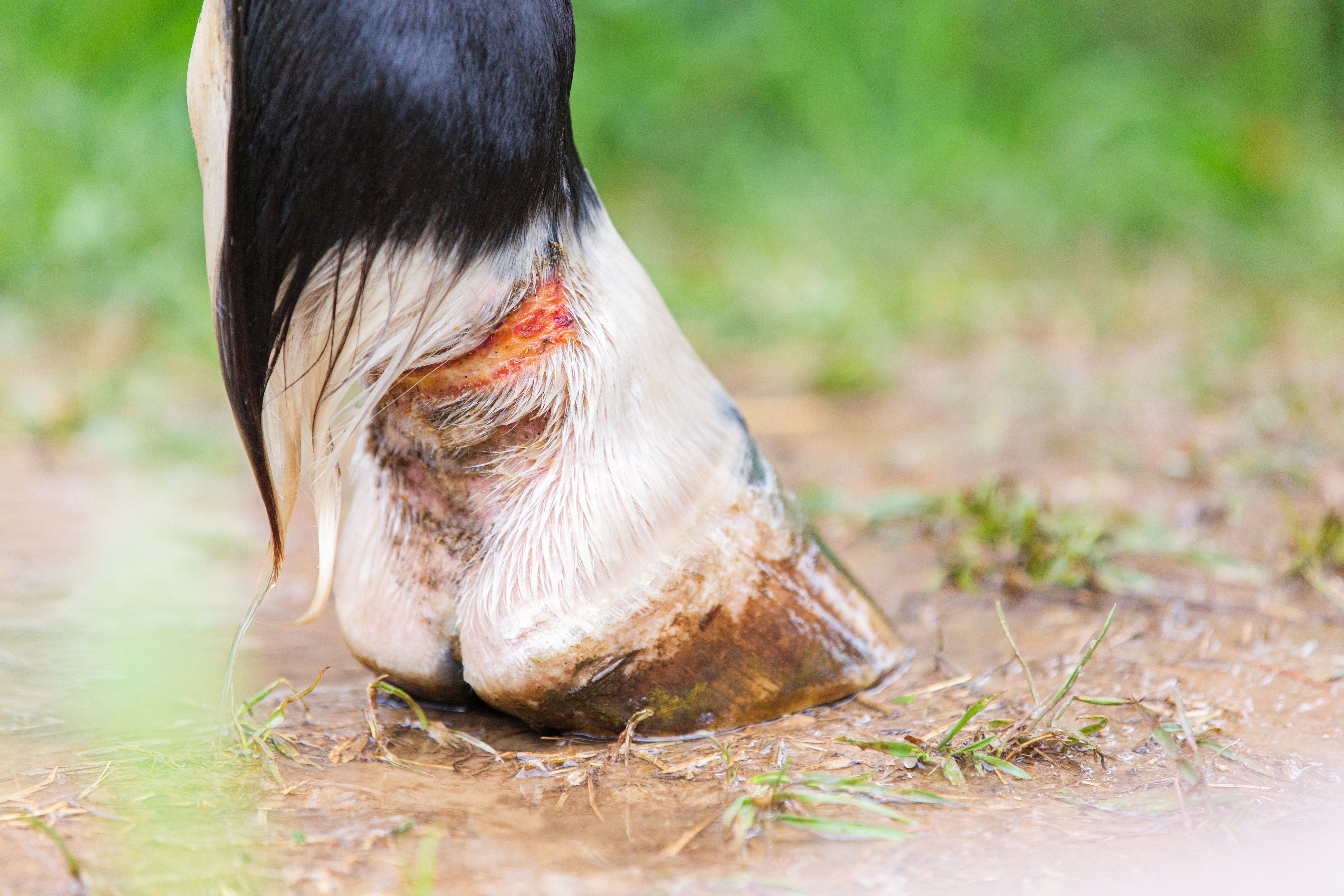Home > Horse Care > Is your horse's wound infected?
Is your horse’s wound infected?
As your horse heals from any type of wound, watch closely for these five signs of infection.
- April 23, 2024
- ⎯ Equus
Most equine wounds heal without complications after only routine cleaning. However, it’s still wise to keep an eye out for infection. Call your veterinarian if a wound on your horse shows any of the following signs.

- Heat: With a clean hand, gently feel the wound and surrounding areas for excessive warmth. You may want to compare it to the same area on the opposite side of your horse.
- Swelling: After an injury, damaged capillaries leak fluids into the surrounding soft tissues, while infection-fighting cells rush to the site. This influx of healing forces is seen externally as swelling. Initial swelling in the hours after an injury is normal and usually subsides within a few days. However, if the swelling worsens or returns after waning, it may indicate infection.
Click here to learn the phases of equine wound healing. - Odor: Any “off” or pungent odor coming from a wound, especially the oddly sweet smell of dead tissue, can be a sign of infection.
- Color: Red skin adjacent to the wound can indicate infection, especially if red streaks radiate from the area outward. Keep in mind, however, that redness may be difficult to see on dark skin. Also observe the color of any exudate draining from the wound. Healthy exudate has a clear or creamy tinge—the result of natural sloughing of dead white blood cells and wound debris. On the other hand, bright green or yellow discharge indicates that bacteria and inflammatory cells are present and an infection is at work.
- Tenderness: Any new injury is likely to be sore. However, if your horse’s wound seems more sensitive to the touch than it was previously, or the pain has spread to the surrounding area, suspect infection.
Don’t miss out! With the free weekly EQUUS newsletter, you’ll get the latest horse health information delivered right to your in basket! If you’re not already receiving the EQUUS newsletter, click here to sign up. It’s *free*!





